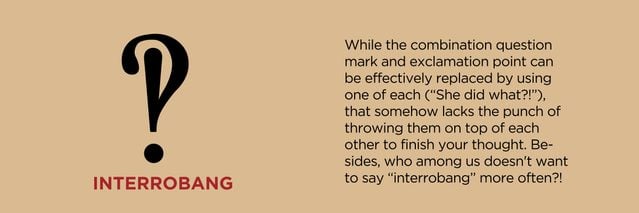
Interrobang
While the combination of a question mark and exclamation point can be effectively replaced by using one of each (“She did what?!”), that somehow lacks the punch of throwing these punctuation marks on top of each other to finish your thought. Besides, who among us doesn’t want to say “interrobang” more often?! Speaking of effective placing, make sure you know when to use a semicolon and a colon.
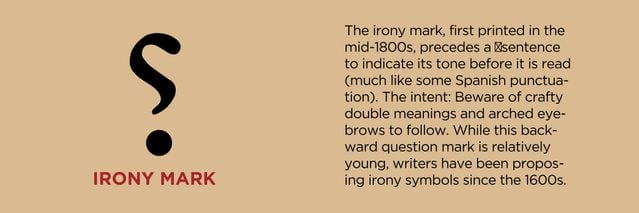
Irony mark
The irony mark, first printed in the mid-1800s, precedes a sentence to indicate its tone before it is read (much like some Spanish punctuation marks). The intent: Beware of crafty double meanings and arched eyebrows to follow. While this backward question mark is relatively young, writers have been proposing irony symbols since the 1600s. By the way, here are some grammar mistakes you could be making.
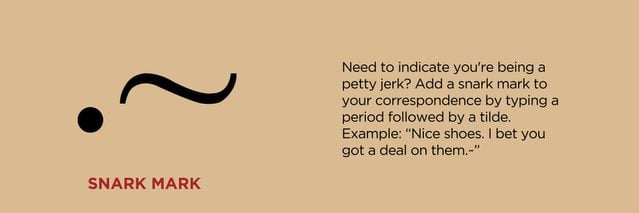
Snark mark
Need to indicate you’re being a petty jerk? Add a snark mark to your correspondence by typing a period followed by a tilde. Example: “Nice shoes. I bet you got a deal on them.~” Be sure to read up on the rules for using an apostrophe.
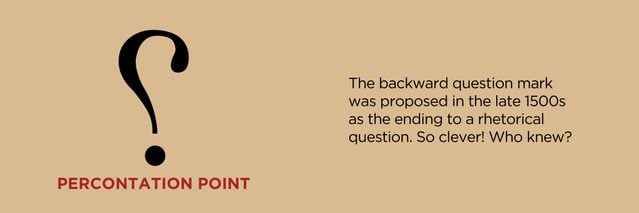
Percontation point or rhetorical question mark
The backward question mark was proposed in the late 1500s as the ending to a rhetorical question. So clever!
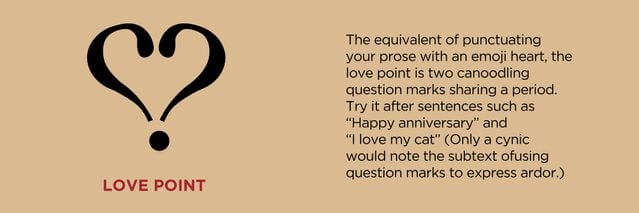
Love point
The equivalent of punctuating your prose with an emoji heart, the love point is two canoodling question marks sharing a period. Try it after sentences such as “Happy anniversary” and “I love my cat.” (Only a cynic would note the subtext of using question marks to express ardor.) Something else you should know? When to use a hyphen versus a dash.
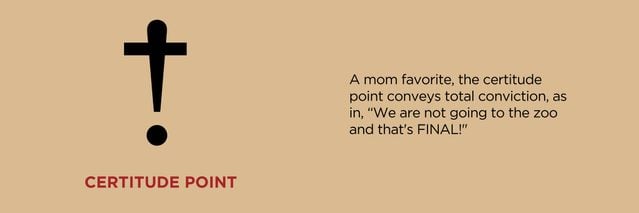
Certitude point
A mom favorite, the certitude point conveys total conviction, as in, “We are not going to the zoo and that’s FINAL!” Think you’re a grammar expert? See if you can ace this high school English quiz.
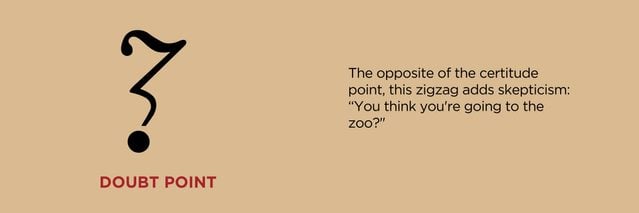
Doubt point
The opposite of the certitude point, this zigzag adds skepticism: “You think you’re going to the zoo?”
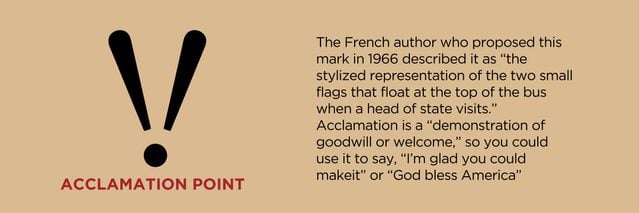
Acclamation point
The French author who proposed this mark in 1966 described it as “the stylized representation of the two small flags that float at the top of the bus when a head of state visits.” Acclamation is a “demonstration of goodwill or welcome,” so you could use it to say “I’m glad you could make it” or “God bless America.”
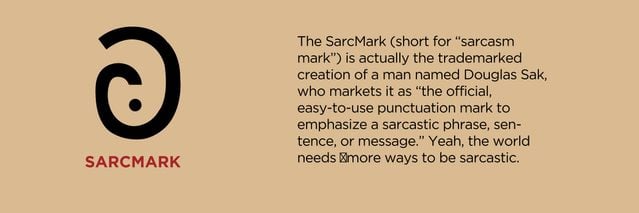
SarcMark
The SarcMark (short for “sarcasm mark”) is actually the trademarked creation of a man named Douglas Sak, who markets it as “the official, easy-to-use punctuation mark to emphasize a sarcastic phrase, sentence, or message.” Yeah, the world needs more ways to be sarcastic.
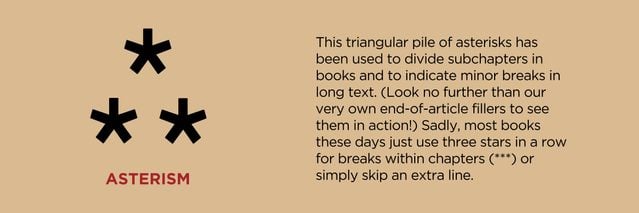
Asterism
This triangular pile of asterisks has been used to divide subchapters in books and to indicate minor breaks in long text. Sadly, most books these days just use three stars in a row for breaks within chapters (***) or simply skip an extra line.
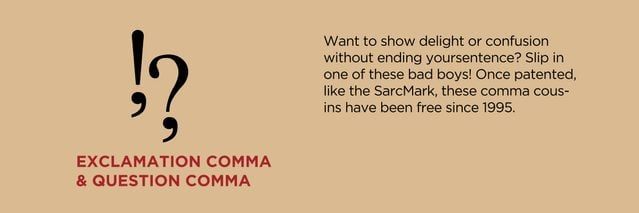
Exclamation comma & Question comma
Want to show delight or confusion without ending your sentence? Slip in one of these bad boys! Once patented like the SarcMark, these comma cousins have been free since 1995. Next, find out the 13 comma rules everyone should know.